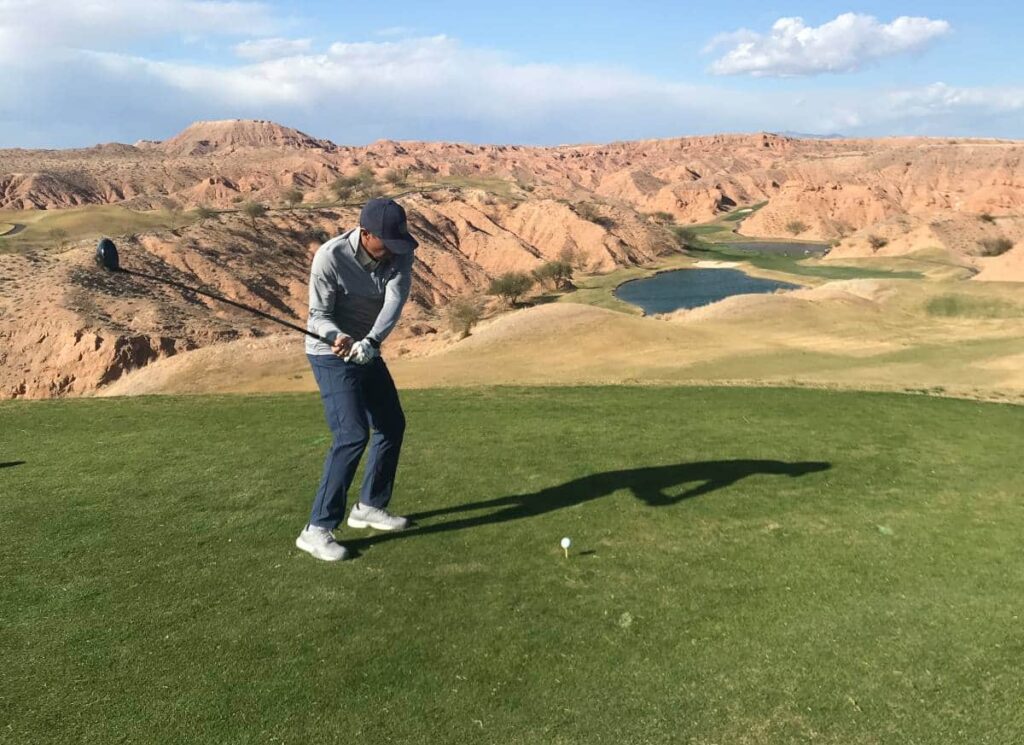In the world of golf, myths and misconceptions often abound, leading to confusion and frustration for players seeking to improve their game. One such prevalent myth revolves around achieving an inside-out swing solely through the use of hands and arms.
This one sounds logical – swing the club back inside your body line and then out to square the face at impact. In reality, a good swing path is done with being in a proper position on top including the proper sequence on the downswing. I’ll dive into this misconception, explore why relying on this approach can be counterproductive and offer insights into how to develop a more effective swing.
Understanding the Inside-Out Swing
The concept of an inside-out swing refers to the path of the golf club as it approaches the ball from the inside of the target line, then squares up at impact before continuing along the intended path. This type of swing path is desirable as it promotes straighter shots and helps prevent slices.
The Pitfall of Using Hands and Arms
Many golfers mistakenly believe that they can achieve an inside-out swing by actively manipulating the club with their hands and arms. This approach often involves forcefully pulling the club inside during the backswing and then initiating the downswing primarily with the upper body, leading to a disconnected and inconsistent swing.
Forcing this path by using your hands and arms will lead to being on your toes at impact and losing your balance after impact. This will lead to many inconsistent shots and the loss of distance and some sore backs.
Why It Doesn’t Work
Relying excessively on the hands and arms to create an inside-out swing can result in several issues:
- Loss of Power and Control: Manipulating the club path with the hands and arms tends to disrupt the natural sequencing and coordination of the golf swing. This can lead to a loss of power and control over the ball’s trajectory.
- Inconsistent Ball Striking: An over-reliance on hand and arm action often leads to inconsistent ball striking, with shots ranging from hooks to slices depending on the timing and execution of the swing.
- Increased Tension and Stress: Trying to force an inside-out path with the hands and arms typically results in increased tension throughout the swing, leading to a less fluid and more mechanical motion.
Steps to Achieve the Inside-Out Swing
What golfers don’t realize is that your body turning down first can get your path inside-out for you. When you start transferring your weight to the target side with a turn (not a slide), your hands and club will now trail or lag behind which will cause a slight drop which means that you will have that inside-out path that you desire.
We also have to make sure that we are in a better position at the top of your swing for you to allow this to happen. I see many golfers struggle because of how they took the club back. Since you have a better understanding of this concept, let’s go step by step on how to achieve the correct path.
Round out your takeaway
Keep the butt end of your club pointing at your belt buckle (avoid hinging your wrists and bringing in the club too far inside). Initiate the backswing by rotating the hips and shoulders together, allowing the club to naturally track to the inside.
Smooth transition
Transition smoothly from the backswing to the downswing, emphasizing the rotation of the body rather than a sudden movement with the hands.
Release the club
Your wrist will now hinge because you are now in the position to allow the clubhead to release. This will result in a more natural and controlled uncocking of the wrists and rotation of the forearms through impact, allowing the clubhead to square up to the target and generate clubhead speed and power in the swing.
Maintain a light grip pressure
Using a light grip pressure in golf allows for a more natural release of the club through impact, facilitating proper wrist action and forearm rotation. This relaxed grip enables better clubhead speed, accuracy, and a smoother transition in the swing.


